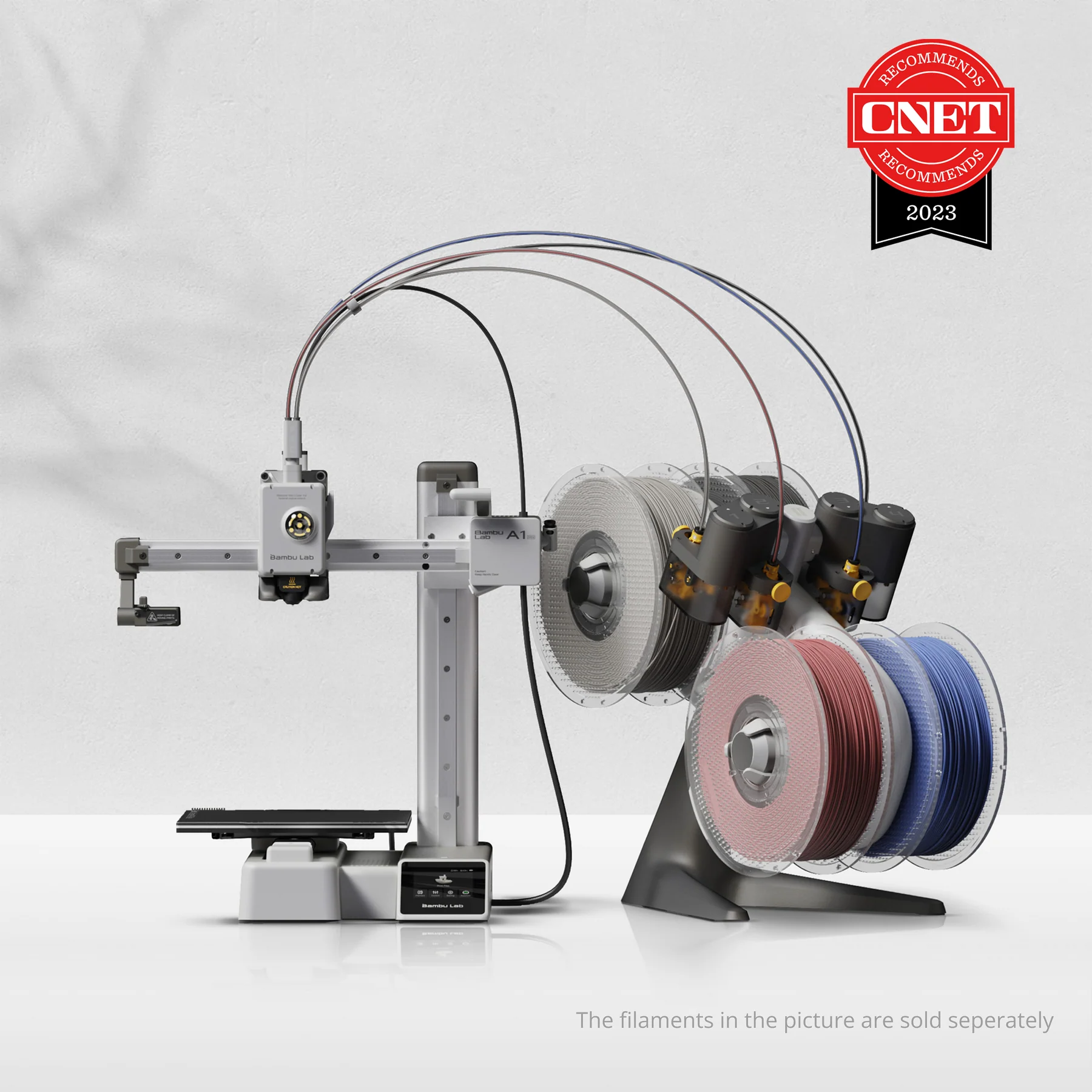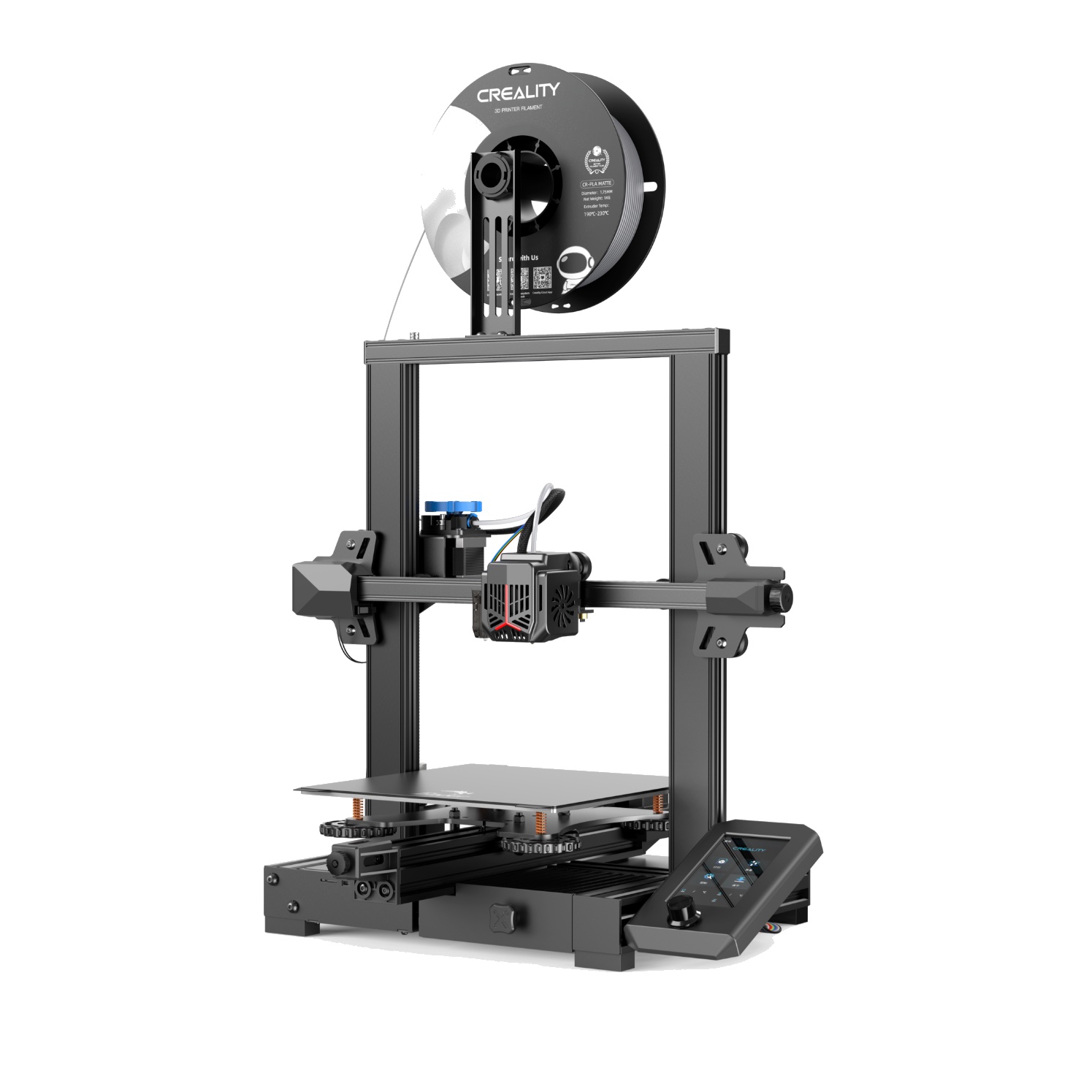Compare A1 Mini vs Ender 3 V2 Neo
Comparison between the best 3D printers
Choose the best 3D printer at the best price. The cheapest 3D printers are here.
Buy a 3D printer here with 3D Fila.
 |
 |
|
| Model | A1 Mini |
Ender 3 V2 Neo[BUY Ender 3 V2 Neo] |
| Printing Material | Filament | Filament |
| Buy Filament for Bambu Lab A1 Mini | Buy Filament forCreality 3D Ender 3 V2 Neo | |
| Estimated price | $549,00 | $310,00 |
| Manufacturer | Bambu Lab | Creality 3D |
| Release Year | 2023 | 2022 |
| Print Volume [mm] | 180x180x180 | 220x220x250 |
| Printer Size [mm] | 315x347x365 | 438x424x472 |
| Weight [kg] | 5,5 | 9,8 |
| Power Loss Recovery | YES | YES |
| Enclosed printer | NO | NO |
| Bed Leveling | Automatic | Automatic |
| Filament End Sensor | YES | YES |
| Bed type | Heated | Heated |
| Power supply system | Direct Drive | Bowden |
| Standard nozzle | 0,4 | 0,4 |
| Maximum Nozzle Temperature [°C] | 300 | 260 |
| Maximum Bed Temperature [°C] | 80 | 100 |
| Maximum printing speed [mm/s] | 500 | 80 |
| Filament holder | YES | YES |
| Camera for supervision | YES | YES |
| Recommended filaments | PLA, PETG, TPU, PVA | PLA, PETG |
| Recommended slicers | Bambu Studio, Super Slicer, Cura, Prusa Slicer, Orca | Cura, Simplify, Slic3r, IdeaMaker |
| Maximum Resolution [mm] | 0,1 | 0,1 |
| Processor | 32-bit Silenciosa | 4.2.2 mainboard |
| Display | Touchscreen 2,4'' | Display touchscreen 4,3'' |
| Power Supply | 150 W | |
| Connectivity | Wifi, Bambu bus, Cartão SD | SD / USB |
| Operating systems | Windows, Linux, Macbook | Windows, Mac, Linux |
| Date of registration in the system | 2024-04-10 | 2022-12-09 |
| Release date | 2023 | 2022 |
| Extra features | The Bambu Lab A1 Mini stands out not only for its impressive speed and automatic calibration, but also for its multi-color printing capability thanks to AMS Lite. This innovative system makes multi-color printing easy, making it accessible to everyone. AMS Lite, specific to the A1 Mini, supports up to four different materials simultaneously, providing creative freedom without complications. With comprehensive sensors for energy monitoring and recovery, a camera for timelapses and Wi-Fi control, the A1 Mini and AMS Lite together offer an intuitive and advanced 3D printing experience, ideal for materials such as PLA, PETG and TPU, and designed for simplicity and fast maintenance with quick-change nozzles. | The Ender 3 V2 Neo printer stands out for its automatic bed leveling with the CR Touch system, ensuring high-quality initial layers. It features an all-metal Bowden extruder for increased durability and improved filament handling. Its flexible, PC-coated magnetic build plate makes it easy to remove prints and is durable and easy to clean. It also includes a new user interface with model preview and an updated gantry design. The Ender 3 V2 Neo maintains the same build volume and temperatures as the previous version, supporting popular filaments such as PLA and ABS. It features a quiet 32-bit mainboard and additional features such as a filament sensor, print recovery, simple 3-step assembly, an integrated toolbox, and belt tensioners. |
| Support for multiple colors and materials (AMS and CFS) | YES | NO |
Notes * |
||
| Cost-benefit | 7 / 10 | 6 / 10 |
| Hardware | 4.2 / 10 | 2.4 / 10 |
| Tela | . | . |
| Print volume | 3 / 10 | 3 / 10 |
| Performance | 4 / 10 | 0 / 10 |
| [BUY Ender 3 V2 Neo] |
Conclusion |
| In comparing the Bambu Lab A1 Mini and Creality 3D Ender 3 V2 Neo, several key factors come into play, including price, features, and performance. The A1 Mini, while priced higher, offers cutting-edge technology and impressive capabilities such as a remarkably high maximum printing speed, advanced multi-color printing with AMS Lite, and a host of integrated sensors for enhanced user experience. Its compact design and lightweight nature make it convenient for personal and casual use, especially beneficial for users looking for a streamlined, innovative 3D printing solution. Additionally, the automatic calibration and diverse filament compatibility add to its versatility. On the other hand, the Ender 3 V2 Neo provides excellent value with a lower price point, making it a more accessible option for beginners and hobbyists. It features solid build quality, user-friendly interface, and automatic bed leveling, which are essential for ensuring quality prints. While it lacks some of the advanced features of the A1 Mini, it still supports popular filaments and delivers reliable performance, especially for traditional printing needs. Ultimately, the choice between the two depends on the user's requirements and budget. For those seeking advanced features and speed, the A1 Mini stands out as the superior choice. However, for users prioritizing affordability and straightforward functionality, the Ender 3 V2 Neo presents a great balance of cost and capabilities. Both printers cater to different types of users, making either a viable option depending on specific needs and preferences. |

